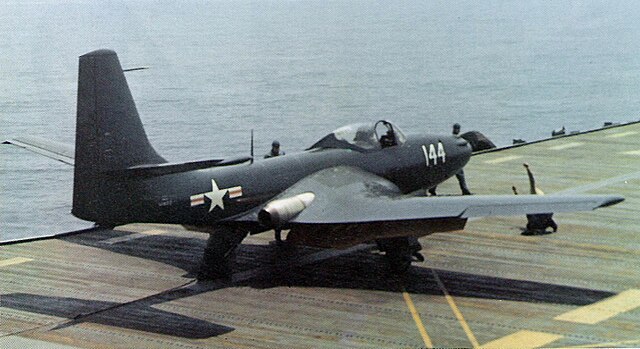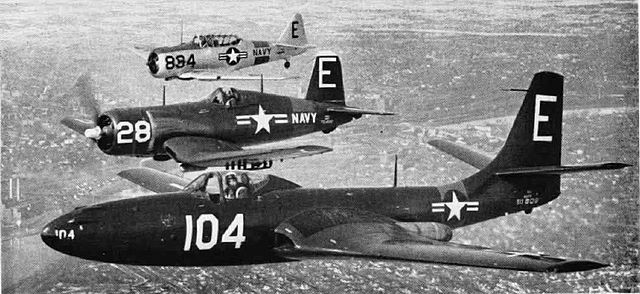The McDonnell FH Phantom is a twinjet, straight-wing, carrier-based fighter aircraft designed and first flown during late World War II for the United States Navy. As a first-generation jet fighter, the Phantom was the first purely jet-powered aircraft to land on an American aircraft carrier and the first jet deployed by the United States Marine Corps. Although only 62 FH-1s were built it helped prove the viability of carrier-based jet fighters. As McDonnell's first successful fighter, it led to the development of the follow-on F2H Banshee, which was one of the two most important naval jet fighters of the Korean War; combined, the two established McDonnell as an important supplier of navy aircraft.
McDonnell FH Phantom
A U.S. Navy FH-1 of VF-17A Phantom Fighters taxies to the catapult during carrier qualifications on the light aircraft carrier Saipan, in May 1948
Three FH-1 Phantoms of VMF-122 in 1949
Three aircraft of the Minneapolis U.S. Naval Air Reserve (front to back): an FH-1 Phantom, an F4U-1 Corsair, and an SNJ Texan in 1951.
The McDonnell F2H Banshee is a single-seat carrier-based jet fighter aircraft designed and produced by the American aircraft manufacturer McDonnell Aircraft. It was an early jet fighter operated by United States Navy and United States Marine Corps, as well as being the only jet-powered fighter to ever be deployed by the Royal Canadian Navy. The aircraft's name is derived from the banshee of Irish mythology.
McDonnell F2H Banshee
XF2D-1, later XF2H-1 in 1947
F2H-1 early in its career while still undergoing testing
F2H-2B with extra pylon near intake for carrying a nuclear bomb








